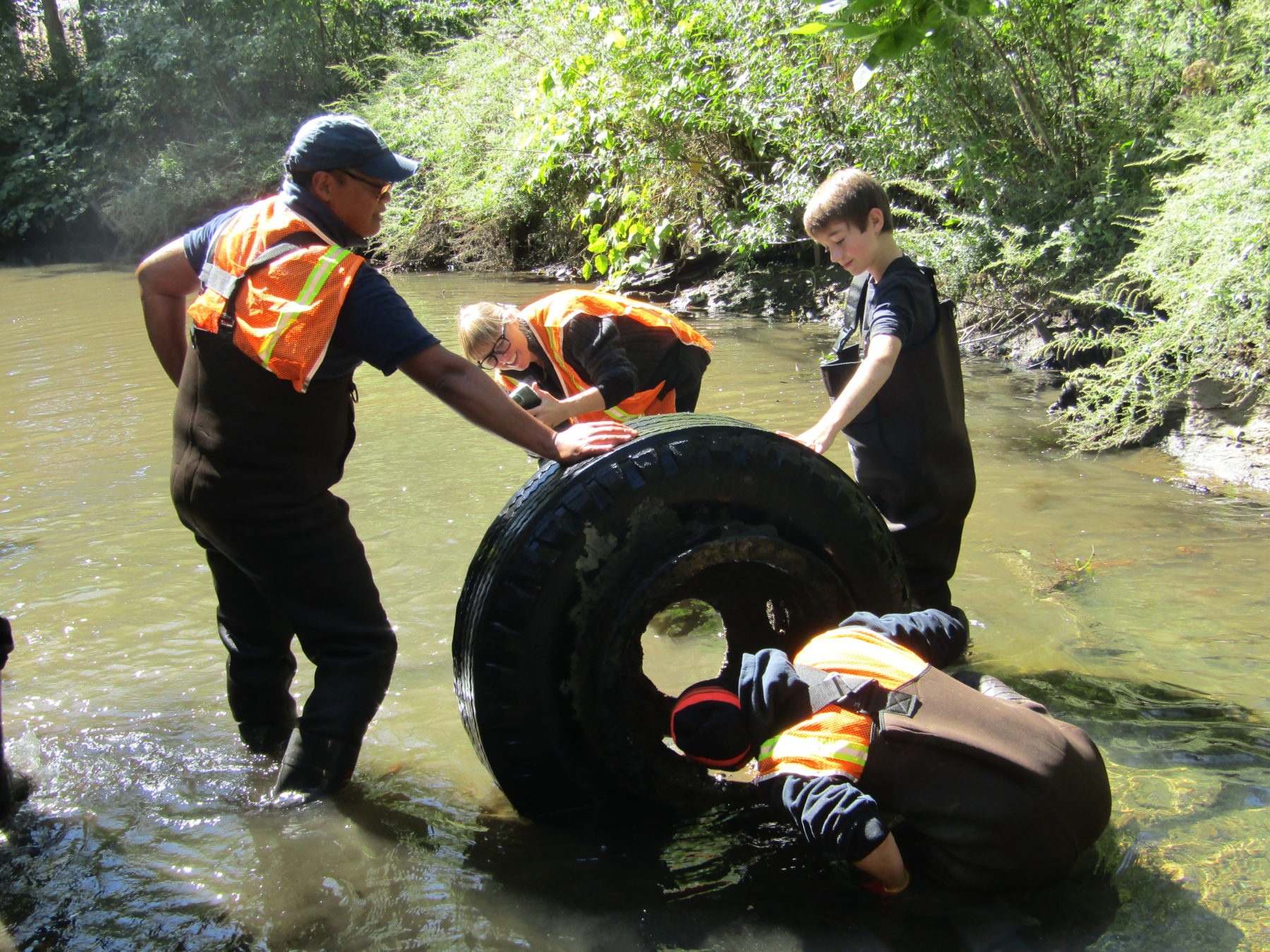
Imagine a river so dirty it makes the Hudson dirtier: that’s the Saw Mill River, which empties in Yonkers.
On a good day, this 23-mile tributary of the Hudson River, located in Westchester County, is 15 times dirtier than what the Environmental Protection Agency calls “dirty.” After rainfall, it’s flush with more sewage than testing equipment can measure.
Fighting back, Elmford locals donned waders and high-vis jackets for a river cleanup in September. Working through the morning, residents pulled ten tires, 56 plastic tarpaulins and the tumbler of a washing machine from the river. But, with so much sewage in the water itself, there is only so much 25 weekend volunteers can achieve.
“If you want to be really realistic, what we’re doing is not going to solve the Saw Mill River’s pollution problem,” said Adrian Rogers, who joined the cleaning crew with his wife and two children.
As volunteers continue to fight physical pollution, an ongoing study at Sarah Lawrence College hopes to trace the DNA in the sewage back to dogs, birds, or humans. Results are due next month and will show how to clean up the Saw Mill River for good.
“Say we find a really strong signal from dogs,” said Michelle Hersh, the lead researcher conducting the study. “The answer would be some kind of public information campaign, encouraging people to clean up their dog waste.”
“If it is of human origin, that means something is wrong. […] That could be illegal discharge, it could be failing infrastructure,” she added.
To Oded Holzinger, who organized the cleanup as Groundwork Hudson Valley’s Climate Resilience Manager, the source of the sewage is obvious.
“It’s in such levels that it’s obviously leaking from infrastructure,” Holzinger said.
If Holzinger’s hunch is true, sewage infrastructure upstate is failing Yonkers. Unlike New York City, all of Westchester is serviced by a Municipal Separate Storm Sewer System. Individual townships own and operate small pipes which take their sewage to a county owned trunk line. In turn, this line takes sewage for the whole of Westchester to the county’s single treatment plant in Yonkers.
When this system is working properly, it should keep rainwater and sewage separate throughout the whole county. But peaks in sewage readings after rainfall mean that old pipes may have begun to leak into the pipes for stormwater, and then into the Saw Mill River.
A fragmented system of local pipes operated by different municipal officials has, advocates fear, allowed whiter, wealthier neighborhoods across the county to resort to short-term fixes to their pipes. Shifting ground, encroaching tree roots or even illegal connections may all be responsible for contaminating the stormwater pipes with sewage that flows into the river. Downstream, Yonkers is left to deal with their sewage.
“We’re looking at a social justice issue,” said Katie Lamboy, who runs the only long-term bacteria testing program on the Saw Mill River.
Lamboy, a Bronx-born marine biologist, didn’t know the Bronx River existed till her twenties. She sees her history repeating itself in Yonkers.
“This [river] is the only touch point with water, but a lot of people don’t even know it’s here,” Lamboy said.
“It’s hard to make people care about a river they don’t have access to,” she said. “I’m trying to give the tools to make people feel empowered.”
Back on the riverbank of the Saw Mill River, other volunteers shared Lamboy’s vision. Sandra Moncada was born in Peru and moved to Yonkers in the 1980s. After generations of dislocation, her family will never know the exact tribe they are descended from, but at the cleanup she feels herself practicing her ancestors’ example.
“Looking after the land is our DNA,” she said from the side of the river. “We’re bringing this stewardship back to Black and brown communities.”
Tracing the sewage is just the start of a long road to recovery for the Saw Mill River. But when the time comes, Lamboy knows locals like Moncada will be at the center of a fight for accountability and policy to keep the river permanently clean.
“Once people know about it, they care about it,” said Lamboy.
About the author(s)
Daniel Shailer is a freelance climate reporter and student at Columbia School of Journalism.



